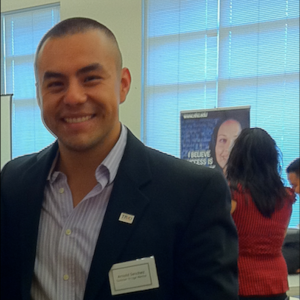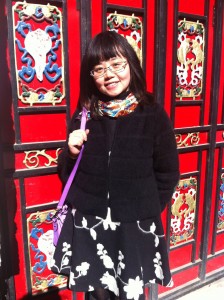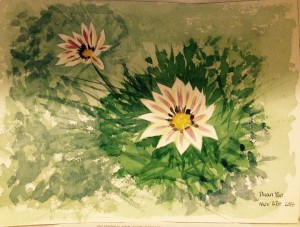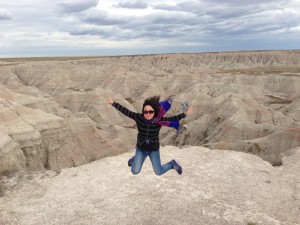Arnold Sanchez is a second-year doctoral student in the Education Department at UC Santa Cruz. His research focuses on immigrant students in education with a particular interest in quantitative constructs of belongingness. In the summer of 2014, Arnold was selected as one of six doctoral students to participate in the Chancellor’s Graduate Internship (CGI) Program for the 2014-2015 school year. The CGI Program is a prestigious internship granted to doctoral students whose research seeks to advance the University’s efforts to provide a supportive and transformative learning experience for students. We recently interviewed Arnold to learn more about his research and efforts to support the University in fulfilling their commitments as a Hispanic Serving Institution (HSI).
Ethan: Could you start by discussing your current research as an intern with the Chancellor’s Graduate program?
Arnold: As an intern, I am responsible for creating a quantitative benchmark that determines where we are as an institution in terms of fulfilling the needs of students that are “non-traditional college students.” The scope of my work looks at institutional data and tries to determine patterns within student groups that can help the University make informed decisions. A specific subset of the “non-traditional college student” population includes Hispanic students. Recently, UCSC was designated as an Hispanic Serving Eligible Institution by meeting a twenty-five percent Hispanic undergraduate population benchmark. However, UCSC has not received an official Title V grant, which will provide the University the financial resources to support the educational needs and aspirations of these students. My current work focuses on creating the equivalent of a report card for the university by examining how the University has done in the past few years in terms of serving Hispanic students.
E: What preliminary findings have emerged for you and your research team?
A: One of the first things I started looking at was retention data. We wanted to see if there were patterns in the data and asked questions like: Who is leaving? Who is not coming back? And why? We began focusing on “near finisher stop-out” cases, students who were close to graduating but either left the university unexpectedly, or whose degrees were not confirmed. We wanted to know what factors discouraged these student from returning to school. One of the things that accounted for a large part of “stop-out” cases was a basic lack of valuable information. Additionally, we found that stop-out cases disproportionately included first-generation college students, students of color, and students who reported experiencing micro-aggressions. We also found that many students did not know how to navigate the institutional bureaucracy, for example, how to locate resources and how to navigate university systems. In contrast, transfers did well. We suspect that transfer students had learned to navigate institutional resources at their community college and this allowed them to succeed at UCSC.
E: What are some of the unexpected challenges that you have encountered in your work?
A: One lesson I have learned is how difficult it is to acquire data. It is a process within itself–a lot of paperwork and training. I have to be really patient. I thought the data was going to be somewhere in an external hard drive, and I was going to go at it and produce report after report, but it didn’t work that way. The first couple weeks of the internship was focused on trying to acquire institutional data and to begin mapping the data universe on campus. Where is it coming from? Where is it stored? Who’s storing the data? How can it be retrieved? UCSC has a data system that I had to understand from scratch. Currently, I’m waiting for a clearance on another data set that will allow us to flesh out a report on Hispanic student performance.
E: I’m wondering if you could comment on how your applied work compares or contrasts with what we are learning in our graduate courses.
A: Graduate school prepares you broadly in theory. When I am doing this work, I have to be very practical and think about the immediate implications of the students we are studying. A lot of this work is not what I would submit to a journal for publication. It is work that is very specific, that has to have immediate implications, that has to inform practice. But quantitative analysis is an art form as well. We need to understand where the data is coming from, how to clean the data, how to determine what is relevant. My work is more practical, but I believe that it should still be embedded within a theoretical framework, of which my graduate coursework has proved an invaluable role.
E: What do the next six-months of your program look like?
A: I have to produce segments of reports that will come together in a final report. Along the way I’m having check-ins with my supervisor, Pablo G. Reguerin, who is at the forefront of giving me the support and services I require and linking me to the people who can provide access to the data. We work closely together because he is the gateway to other institutional services and resources that allow for this work to take place. Looking ahead, I’m excited to continue my collaborative work with the Academic Resource Center and the UCSC’s data warehouse personnel.




